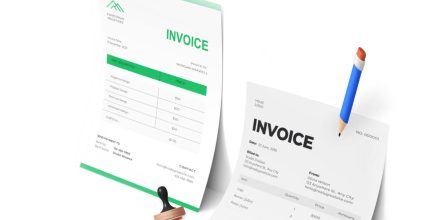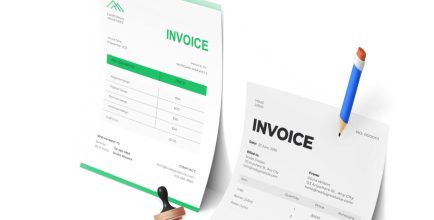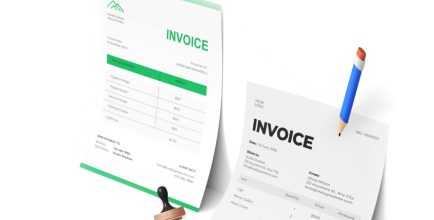Exploring Different Types of Payroll Reports
A payroll report is essentially a document that consolidates various pieces of payroll data. These documents are crucial for different aspects of business management and come in several forms:
Company Payroll Reports
This type of report provides a comprehensive overview of the total payroll expenses across the entire company for a specified period. It’s an invaluable tool for forecasting monthly payroll needs and calculating quarterly Federal Insurance Contributions Act (FICA) taxes.
Employee Payroll Reports
These reports focus on individual employees, detailing wages, taxes, and deductions. Often referred to as a pay stub or employee earnings report, they are distributed monthly and allow employees to access their historical payroll information easily.
Payroll Tax Reports
They are likely the most daunting report due to the strict accuracy required by government regulations. They are essential for reporting employee compensation and payroll taxes on both an annual and quarterly basis to federal, state, or local authorities. Key federal forms include Form 940 for the Federal Unemployment Tax Act (FUTA), Form 941 for FICA taxes and federal income tax withholdings, and Form W-2 for annual employee compensation and tax withholdings. It’s important to consult your state’s government website for specific state-required forms.
Certified Payroll Reports
For those in government contracting, submitting certified payroll reports weekly is a mandated task. The WH-347 form is used federally, with state and local governments having their own specific forms. Due to the high stakes of accuracy, consulting with an accountant for these reports is advisable.
Time Tracking Reports
These reports are essential for businesses that require employees to log their hours. They provide insights into business activities and can be used to fine-tune client invoicing based on the total hours worked. On a smaller scale, they offer a glimpse into employee time management skills.
How to Use Payroll Reports Effectively
Understanding the different types of payroll reports is only half the battle. Leveraging them effectively requires diligence and a solid understanding of your business operations. Here are some tips for using payroll reports efficiently:
- Identify Discrepancies: Regularly reviewing payroll reports can help identify any discrepancies or errors in employee compensation, taxes, or deductions. This allows for timely corrections and ensures accurate reporting to government agencies.
- Measure Employee Performance: Time tracking reports can provide valuable insights into employee productivity and time management skills. By analyzing these reports, you can identify areas where employees may need additional training or support.
- Forecast Business Expenses: With company payroll reports, you can forecast future payroll expenses more accurately, helping with budget planning and cost control measures.
- Ensure Compliance: Payroll tax reports and certified payroll reports are crucial for ensuring compliance with government regulations. Regularly reviewing and submitting these reports accurately can help avoid costly penalties or legal issues.
The Golden Rules of Payroll Reporting
Managing payroll effectively is crucial for any business owner. To streamline this process and ensure accuracy in your financial reporting, here are some golden rules for payroll reporting that can help you immensely:
Consistent Reporting Frequency
To maintain clarity over your financial situation, creating and reviewing payroll reports with consistent frequency is vital. While annual and quarterly reports are mandatory for federal income taxes, incorporating monthly reports can offer deeper insights, especially for businesses with fluctuating incomes. This practice is not just about compliance but about gaining a strategic view of your payroll expenses.
Aligning Reports with Performance Metrics
Monitoring payroll reports offers an opportunity to identify inconsistencies, such as unexplained absences or discrepancies in time reporting, often referred to as “time theft.” By correlating payroll data with performance metrics, you can ensure that you are compensating actual work done, thereby enhancing productivity and operational efficiency.
Implementing Automated Payroll Systems
The era of manual timesheets has long passed. Modern businesses benefit from leveraging online payroll software that not only tracks expenses and taxes but also automates calculations and reduces the likelihood of human error. Choosing the right software can significantly streamline your payroll process.
Engaging Professional Assistance
Navigating the complexities of employer taxes and federal payroll reports can be daunting, particularly for those new to the intricacies of financial management. Engaging a professional accountant can provide you with a clearer understanding of your tax obligations, ensuring compliance and financial health.
Conclusion
In conclusion, mastering the intricacies of payroll reporting is a vital aspect of business management that transcends mere compliance. It’s about fostering a transparent and financially healthy workplace where insights garnered from diverse payroll reports guide strategic decision-making.
By understanding the nuances of various payroll reports, implementing consistent reporting practices, utilizing modern payroll solutions, and seeking professional guidance when necessary, businesses can not only meet their legal obligations but also optimize their operational efficiency and financial stability.
As we move forward in an increasingly digital and regulation-stringent business environment, the ability to adeptly manage payroll reporting will continue to be an indispensable skill for businesses aiming for sustainable growth and success.



